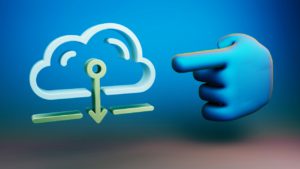As businesses and individuals increasingly store and manage data in the cloud, the security of this data becomes a crucial concern. Cloud data security is essential in today’s digital world, where reliance on cloud services for data storage and management is growing rapidly. Ensuring the safety and privacy of data stored in the cloud is a key priority for organizations and users alike.
Cybersecurity risks such as data breaches, unauthorized access, and ransomware attacks are significant concerns for data stored in the cloud. The variety of cloud environments, including public, private, and hybrid clouds, each presents its own set of security challenges and vulnerabilities.
Furthermore, the need to comply with various regulations and protect sensitive information like personal data and intellectual property adds to the complexity of securing cloud data.
This article is designed to provide a clear understanding of the key features that are critical in effective cloud data security software. We aim to explore the various aspects that contribute to a strong cloud security solution, focusing on the features that are essential for protecting your data in the cloud.
1. Comprehensive Data Encryption
One of the foundational elements of cloud data security is comprehensive data encryption, particularly end-to-end encryption. This type of encryption is crucial for protecting data both at rest (when stored) and in transit (when being transferred). Encrypting data at rest ensures that it remains secure on cloud servers, impervious to unauthorized access or breaches.
Similarly, encrypting data in transit protects it from interception or tampering as it moves across networks. This dual-layered approach is essential in creating a secure cloud environment, where data vulnerability is minimized at every stage of its lifecycle.
Advanced Encryption Standard (AES) is widely recognized for its strength and speed, AES is often used for encrypting data at rest. It’s known for its ability to handle large volumes of data efficiently.
2. Access Control and Identity Management
Access control is a critical component of cloud data security, acting as the first line of defense against unauthorized access. It involves defining who can access what data and under what conditions. Access control mechanisms in cloud environments typically include:
- Role-Based Access Control (RBAC): This involves assigning permissions to roles rather than individuals. Users are then granted roles that provide them with the necessary permissions to perform their job functions.
- Attribute-Based Access Control (ABAC): Here, access is granted based on attributes (such as department, role, time of access), providing more dynamic and context-aware control.
- Mandatory Access Control (MAC) and Discretionary Access Control (DAC): While MAC restricts access based on centralized policies, DAC allows users to control access to their own data.
The Significance of Identity and Access Management (IAM) in Cloud Security
Identity and Access Management (IAM) is the framework for managing digital identities and permissions in a secure, efficient, and automated manner. In cloud security, IAM plays a pivotal role by ensuring that only authenticated and authorized users can access specific resources. It helps in:
- Verifying User Identities: Ensuring that individuals are who they claim to be.
- Managing User Permissions: Controlling the level of access granted to each user.
- Tracking User Activities: Monitoring and logging user actions for security and compliance purposes.
IAM systems are essential for maintaining the integrity and confidentiality of data stored in the cloud. They help in mitigating risks associated with data breaches and unauthorized access.
Best Practices for User Authentication and Authorization
To maximize the effectiveness of IAM in cloud security, certain best practices should be followed:
- Multi-Factor Authentication (MFA): This adds an extra layer of security by requiring users to provide two or more verification factors to gain access.
- Regular Review and Update of Access Privileges: Periodically reviewing user roles and permissions ensures that access rights remain aligned with current job functions and responsibilities.
- Least Privilege Principle: Granting users the minimum levels of access necessary for their work helps in minimizing potential damage from breaches or misuse.
- Single Sign-On (SSO): SSO simplifies the authentication process by allowing users to access multiple applications with one set of login credentials, reducing the likelihood of password fatigue and enhancing security.
- User Behavior Analytics: Monitoring user behavior to detect anomalies that could indicate security threats or breaches.
By implementing these practices, organizations can significantly enhance their cloud data security, ensuring that their resources are accessible only to the right people under the right conditions.
3. Threat Detection and Management
Threat Detection and Management involves continuously scanning and analyzing cloud environments to identify potential threats as they emerge. Real-time detection capabilities leverage advanced technologies to recognize unusual patterns or anomalies that could indicate a security breach or cyberattack. This immediate detection is crucial for minimizing the impact of threats, allowing for swift response and mitigation.
4. Compliance and Regulatory Adherence
Various industries are governed by specific regulatory frameworks designed to protect sensitive data. Two prominent examples are the General Data Protection Regulation (GDPR) in the European Union, which sets guidelines for data protection and privacy, and the Health Insurance Portability and Accountability Act (HIPAA) in the United States, which establishes standards for protecting sensitive patient health information.
Understanding these compliance standards is crucial for any organization handling such data. Each regulation has its own set of requirements regarding data processing, storage, and transmission. Non-compliance can lead to significant legal penalties and damage to an organization’s reputation.
The Role of Cloud Data Security Software in Compliance
Cloud data security software plays a pivotal role in helping organizations maintain compliance with these regulations. Such software is designed with features that align with the requirements of these standards. For instance:
- Data Encryption: Ensuring that sensitive data is encrypted, as mandated by many regulations.
- Access Controls: Implementing strict access controls as required by standards like HIPAA.
- Data Sovereignty: Respecting data residency requirements by controlling where data is stored and processed.
By utilizing cloud data security software that is compliant with relevant regulations, organizations can significantly reduce the risk of non-compliance and the associated liabilities.
Regular Audits and Reporting Features
Regular audits are essential for maintaining compliance. Cloud data security software often includes tools for conducting these audits efficiently. These tools can automatically log access and changes to data, making it easier to review activities and identify any potential compliance issues.
Reporting features are also crucial. Compliance regulations often require organizations to generate reports detailing how data is handled and protected. Cloud data security software typically provides the capability to generate such reports easily, aiding organizations in demonstrating their compliance to regulatory bodies.
5. Data Loss Prevention (DLP)
Data Loss Prevention (DLP) is a set of tools and processes designed to prevent unauthorized access and transmission of sensitive information. In the context of cloud data security, DLP strategies are crucial for mitigating the risks of data breaches and leaks. These strategies include:
- Classifying Sensitive Data: Identifying and categorizing data based on its sensitivity and the level of protection it requires.
- Establishing Data Handling Policies: Creating clear guidelines on how different types of data should be handled, stored, and shared.
- Implementing Access Controls: Restricting access to sensitive data to authorized personnel only, based on their roles and the need to access such data.
- Using Encryption: Encrypting sensitive data both at rest and in transit to protect it from unauthorized access.
6. Scalability and Flexibility
In the dynamic world of cloud computing, scalability is a key attribute of any effective security solution. As organizations grow and evolve, their data volumes, user base, and operational complexities tend to increase. Scalable cloud security solutions are designed to handle this growth seamlessly, without compromising on performance or security.
Scalability in cloud data security means the ability to efficiently expand the scope of protection to accommodate increasing amounts of data and more complex infrastructure requirements. This includes the capability to handle a growing number of users, an expanding range of devices, and larger datasets, all while maintaining high levels of security.
Flexibility is another crucial aspect of cloud data security software. The threat landscape in cloud computing is constantly changing, with new vulnerabilities and attack vectors emerging regularly. Flexible security solutions can quickly adapt to these changes, offering protection against the latest threats.
7. User-Friendly Interface and Management
The usability of cloud data security software is significantly influenced by its interface design. An intuitive interface simplifies complex processes, enabling users to easily navigate through various features, from monitoring security alerts to managing access controls and analyzing reports.
A well-designed dashboard should provide:
- Clear Visualization: Graphical representations of data and security metrics that allow users to quickly grasp the status of their systems.
- Easy Navigation: Logical and clear menus and options that facilitate quick access to different functionalities.
- Customizable Views: Options for users to tailor the dashboard to show the information most relevant to their specific roles and responsibilities.
Effective utilization of cloud data security software is heavily dependent on the users’ understanding and comfort with the tool. Comprehensive training and robust support are essential in empowering users to make the most of the software’s capabilities.
8. Backup and Disaster Recovery
Cloud data security software plays a crucial role in the backup and recovery process, serving as a safeguard against data loss due to system failures, cyberattacks, or natural disasters. This software ensures that backups are secure, up-to-date, and easily recoverable. It often includes features that automate the backup process, encrypt backup data, and facilitate quick and reliable data restoration.
Effective backup management is essential for data integrity and business continuity. Some best practices include:
- Regular Backups: Schedule frequent backups to minimize data loss. The frequency should align with the organization’s data usage and update rates.
- 3-2-1 Backup Rule: Maintain three copies of data, on two different media, with one copy stored offsite for added security.
- Test Restorations: Regularly test backup restorations to ensure data integrity and the effectiveness of the recovery process.
- Data Prioritization: Identify and prioritize critical data to ensure it is backed up more frequently.
- Version Control: Keep multiple versions of backups to allow recovery from different points in time.
9. Integration Capabilities
In today’s complex IT environments, the ability of cloud data security software to integrate seamlessly with existing systems and applications is crucial. Organizations often use a diverse array of tools and platforms, each playing a role in their overall IT strategy. Effective integration ensures that the security software works harmoniously with these existing systems, providing a unified approach to data security.
Key benefits of seamless integration include:
- Unified Security Posture: Integration allows for a centralized view of security across various platforms and applications, making it easier to manage and monitor security protocols consistently.
- Reduced Complexity: By integrating with existing systems, organizations can avoid the complexities and potential security risks associated with managing multiple, disparate security solutions.
- Efficiency in Operations: Seamless integration leads to more efficient operations, as data can flow securely between systems without the need for manual intervention or complex workarounds.
10. Vendor Reputation and Support
When selecting cloud data security software, the reputation and reliability of the vendor are as important as the features of the software itself. A credible and reliable vendor is an indicator of the quality and effectiveness of the software. To assess a vendor’s reputation, consider the following:
- Track Record: Look into the vendor’s history and experience in the field of cloud data security. A long-standing history of success and innovation can be a strong indicator of reliability.
- Customer Reviews and Testimonials: Feedback from current and past users can provide valuable insights into the software’s performance and the vendor’s service quality.
- Industry Recognition: Awards, certifications, and recognition from reputable industry bodies can further validate the vendor’s standing in the market.
- Financial Stability: A vendor with strong financial health is more likely to invest in ongoing research and development, ensuring that their software remains at the forefront of cloud data security.
Moreover, continuous support and regular updates from the vendor are critical for the long-term effectiveness of cloud data security software. This ongoing support ensures that the software keeps pace with the rapidly evolving landscape of cyber threats and technological advancements.
Conclusion
In conclusion, selecting the right cloud data security software requires careful consideration of these features. By prioritizing these aspects, organizations can ensure robust protection of their cloud-stored data, maintain compliance with regulatory standards, and foster a secure and resilient digital environment. As the cloud continues to evolve, staying vigilant and informed about these key features will be crucial in navigating the challenges of cloud data security.














